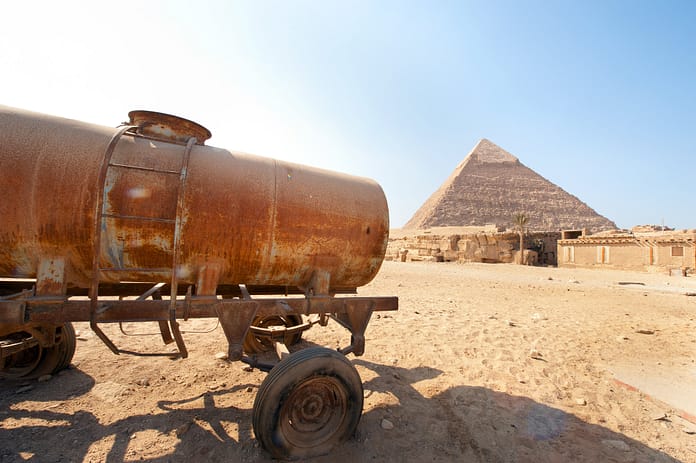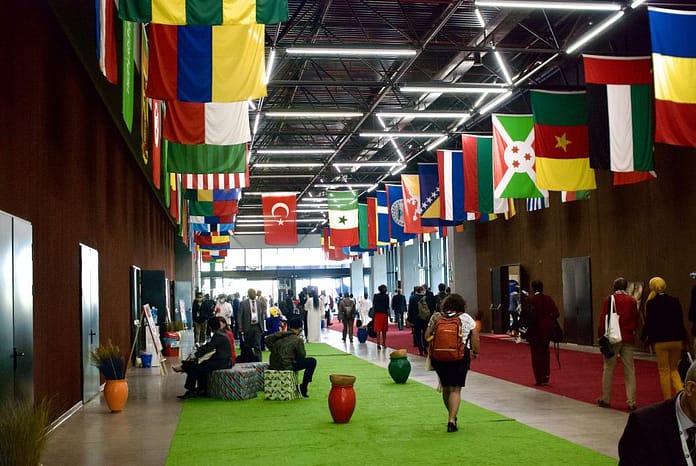Sponge Cities: How to break the cycle of wasted waste
Around one million tons of food are trucked into the West African cities of Accra and Kumasi every year. In Kumasi alone, there is more nitrogen held in this edible mass than several year’s importation of nitrogen fertilizer for the entire country. Yet outside of the cities, soils are depleted of essential nutrients whilst nitrogen rich waste is dumped in landfill or drains.

Photo: Apollo Habtamu / IWMI
In other words, the cities are “sinks” – absorbing large amount of resources, with very little being recovered or recycled. In part this is because waste management cannot keep pace with urbanization. In Kumasi, for instance, with over 2 million inhabitants, a fifth of the solid waste and two thirds of the fecal sludge remains in streets, pits and septic tanks. Up to 80 percent of the nitrogen and phosphorus consumed with food in the city eventually pollutes the urban environment, with ground and surface water receiving the largest share from unsafe septic tanks.
When it comes to water, these same conurbations have been described with cities as “sponges”: sucking resources from the periphery, while usually releasing a sullied and less appreciated return flow.
But now emerging ideas of a circular economy are changing how cities view their waste. Recovering value from what we discard or excrete is becoming the new cornerstone of urban waste management. The idea is explored in the chapter Green opportunities for urban sanitation challenges through energy water and nutrient recovery in a new book The Water Food Energy Climate Nexus.
Organic waste contains nutrients like nitrogen and non-renewable phosphorus that are immensely valuable as fertilizer. It can also be used to generate energy, either by converting it to fuel briquettes, or biogas or at least by controlling waste decomposition on landfills to extract flammable gasses like methane. If safely managed it can also be used to feed fish, poultry or livestock like pigs. In short, organic waste has value: the “waste” is actually a resource.
“Supporting a move towards a circular model where resources are used again and again offers opportunities for increasing urban resilience,” Says IWMI’s Pay Drechsel, one of the chapter’s authors. “It can create value from the recovery and reuse of resources that would otherwise be irretrievably lost. This also potentially delivers badly needed cost recovery options for waste management and sanitation, and business opportunities for private sector engagement.”
Metropolitan authorities the world over are beginning to realize the double value proposition, for example in water reuse, says Drechsel. Without reuse, wastewater treatment has an environmental value, but no financial value. Water, nutrient and energy reuse add new value streams to the proposition, which can be saving or direct revenues. For example, there are lower energy costs of wastewater treatment compared to sourcing freshwater from long distances or the ocean. In many situations, the direct revenues from selling treated wastewater are small, given that the fresh water prices are usually subsidized and the wastewater has to be sold even more cheaply. However, with the right business plan, several revenue streams can be combined.
The nutrients in wastewater can for example, be removed through water plants, like duckweed, which transforms them into a high quality protein which can be used as fish or poultry feed if the water comes from non-industrial sources. The fish feed is then used in aquaculture and the revenues from fish sales can, with business knowhow, fully recover the operational costs of both the wastewater treatment ponds and the fish farming.

Photo: Nana Kofi Acquah / IWMI
“The recovery of energy, as another example, can allow even the largest wastewater treatment plants to become as good as energy self-sufficient which is important as energy is usually their largest cost factor,” Drechsel adds.
In areas where the bulk of wastewater reuse is for restricted crop irrigation, advanced treatment may not be required and use of appropriate technology can produce ‘fit for purpose’ water at low investment and maintenance cost while entities requiring ultra-pure water can undertake their own treatment for high-end reuse. Thus, investments in sustainable resource recovery require careful judgement of whether technologies fit the local purpose and context.
















